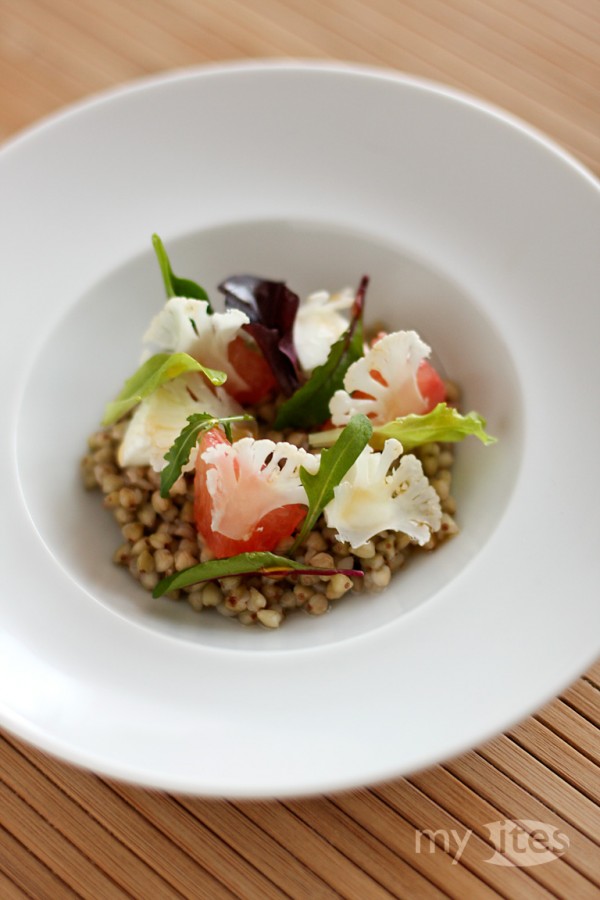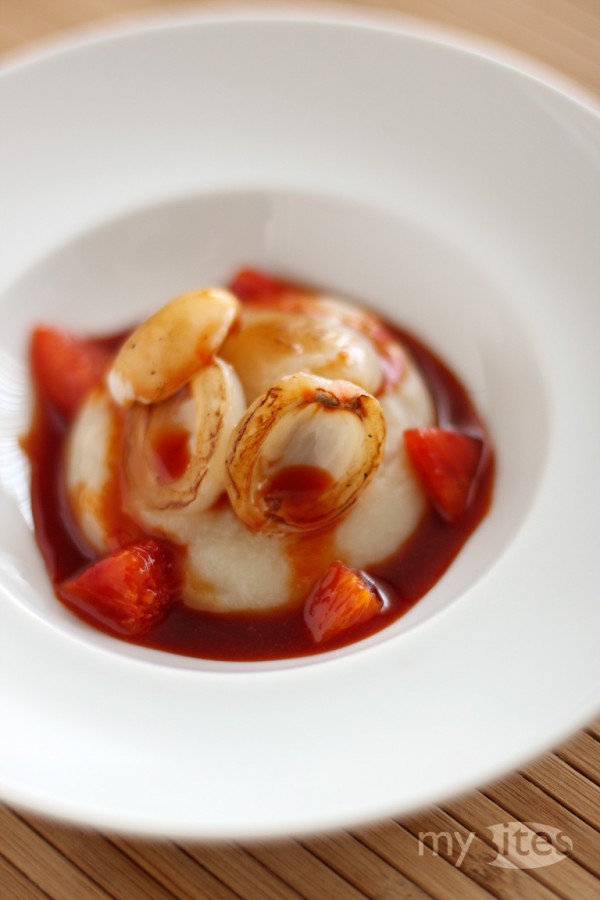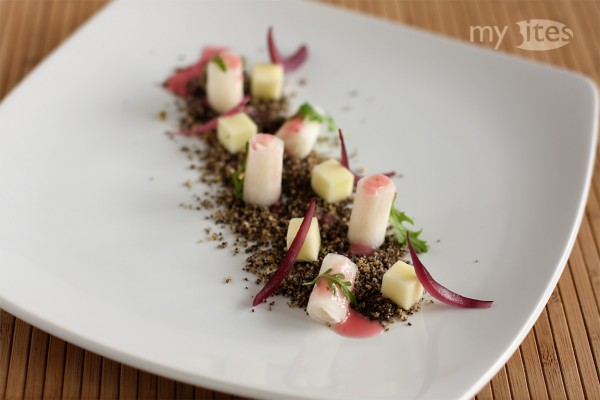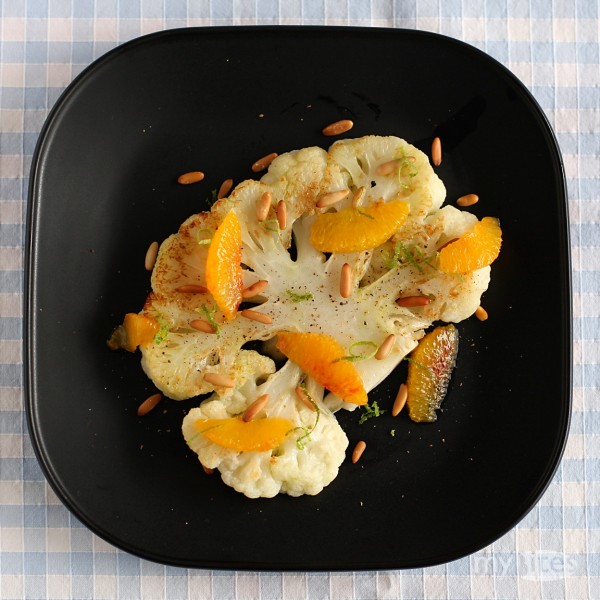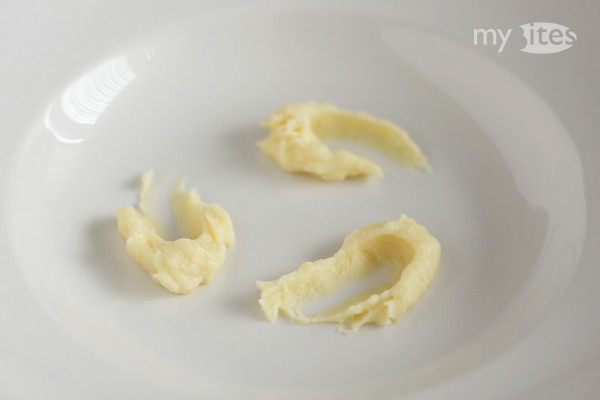Recently, I’ve been using the Foodpairing Explorer even more than usual. I created many interesting combinations, but with most of them I’m still thinking about the optimal ratios, preparations and presentations. The ingredient combination for this fast and simple vegetarian dish is based on a combo list too, which I linked together recently on Foodpairing.
Category Archives: Appetizer
Roasted Litchi with Salsify Puree and Blood Orange Sauce
How would you describe the texture of fresh litchis? It’s probably closest to some traditional grape varieties, but this association might come from its very sweet taste as well. Considering the texture only, to my opinion litchis resemble prawns or scallops. Based on this line of thought, I replaced the prawns to litchis in a simple recipe I developed 2 years ago.
Camomile Turnip on Poppy Seed Soil
In my previous post I gave a short review of the renewed Foodpairing website. In a short tutorial I went through all options of the Foodpairing Explorer and simultaneously created a combination of ingredients featuring poppy seeds, banana, turnip, apple and camomile. First this combination might sound a little bit weird, but if you take a closer look, they actually make sense together. Poppy seeds aren’t very sweet but slightly bitter on their own. Banana used as chips are less flavorful and less sweet compared to the raw fresh fruit and it contributes a nice crunchy texture too. Apples can be tart, turnips are actually very sweet and while they are both crisp, their consistencies differ. So to sum up, every main flavor and many different textures are present in the aforementioned combination, which is the foundation of creating an interesting vegan dish based on them.
Roasted Cauliflower with Orange, Mint and Pine Nuts
It’s very hard to find really bloody oranges. At the market here in Erlangen two different kinds of blood oranges are being sold: one half-blood orange called “Tarocco” and a full-blood orange named “Moro”. In the last years and during this winter as well, they were both pretty pale inside, containing only a few red pigments – if any at all. I usually try to determine the bloodiness of an orange by the color of the skin, but unfortunately a red pigmented skin doesn’t guarantee a deep red interior. Since I don’t know any better method, finding really red blood oranges remains a kind of lottery. The statistics for this current winter season are pretty disillusioning: only 1 of 20 blood oranges was truly deep red inside. I planned to use red blood oranges for this vegan dish too, but unfortunately the oranges I bought had yet again only very few red spots. Irrespectively of their color, they fulfilled their means of use by adding sourness and freshness to the dish.
Chestnut-filled Cabbage with Sunchoke and Cabbage-Tapioca
Nana, a vegetarian friend of mine, announced a vegetarian month, which aims to motivate people to prepare and eat a meatless meal at least once during this month. Besides eating less meat, hopefully the participants will also think a little bit about the vegetarian diet and probably notice that meat does not need to be present on the plate every day. All submitted recipes participate in a contest, where the winner gets an invitation to nana for a vegetarian dinner. Originating from nana’s call for recipes, I took the opportunity to give a thought not only about the vegetarian, but also about the vegan diet.
Pigeon Breast with Quince Sauce and Autumn Vegetables
I wondered why red or white wine is usually added to reduced sauces. Usually the wine is allowed to cook off completely, so in most cases – as long as you’re not cooking specifically a red wine sauce – wine is not so much added for its taste than rather for its acidic component. Another function of the wine is to scrape off the brown roasted parts from the bottom of the pot, but for this purpose water works perfectly well too. Instead of the wine I had the idea to add some quince as an acidic component. Cooking quince over a long time magically enhances its flavor, so I thought it would work ideally in a sauce too, since the the basic stock had to be cooked for several hours. The quince worked really well in the sauce, so if you have any problems with adding alcohol to a sauce – although the alcohol will cook off completely – during autumn you can add some fresh quince instead.
